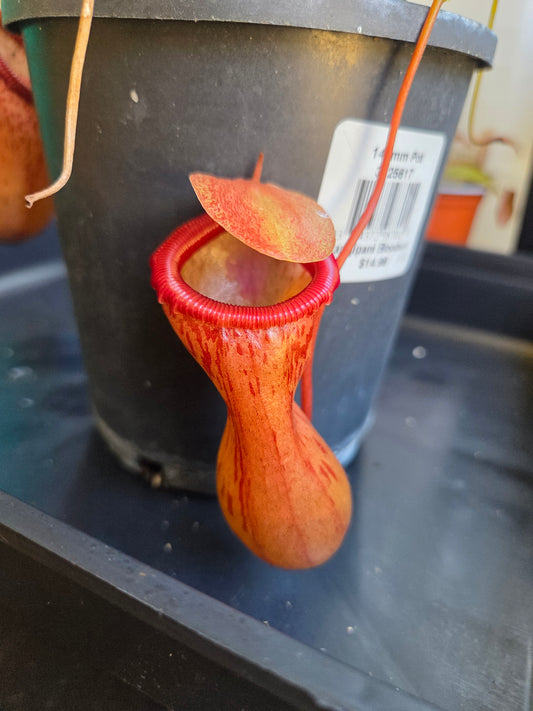Collection: Nepenthes Species (Tropical Pitcher Plant)
Nepenthes is a genus of carnivorous plants, also known as tropical pitcher plants. The genus includes numerous species (170 and counting) that grow naturally in tropical areas. Species have been VERY generalised into three environments that they grow in naturally in the wild; Lowland, Intermediate and Highland.
Generalised Growing Care for Nepenthes Species (Please do further research on particular species)
Sunlight: Indirect bright light. I grow my Nepenthes in either a grow tent with grow lights or in a shade house with 50% shadecloth. Direct sunlight or light that is too intense will burn Nepenthes. Too little light and the plant will not produce any pitchers.
Temperature: Depending on the species will decide what temperature range that particularly species will grow best in. If the plant is grown outside of these conditions, the plant will likely suffer over time and eventually die. The below outlines the three generalised categories Nepenthes Species fall into.
Lowland Conditions: Nepenthes that fall into this category like it hot and humid. Temperatures above 20 to 25 degrees are ideal (though I have found can survive periods of 15 degrees as a low; though some specific species sulk), and maximum temperatures of 35 to 40 degrees (though sitting around 30 to 35 degrees seems to be adequate).
Intermediate Conditions: The most tolerate Nepenthes species fall into this group with their range of temperatures being the easiest to maintain consistently. Temperatures can range from a low of 15 degrees to a high of 30 degrees.
Highland Conditions: Nepenthes that fall into this category need cooler conditions to thrive. Maximum temperatures of 25 degrees and minimums as low as 10 degrees are acceptable. Highland Nepenthes require a temperature drop at night of 10 degrees as this is what is typical in their natural growing environment. Some ultra Highland Species need even lower temperatures listed such as N. rajah.
Watering: Nepenthes like to be moist without being soaked. Rainwater is highly recommended or filtered water as tap water can contain harsh salts and minerals that can kill Nepenthes. Using a pot saucer can be a handy way to keep the pot damp without overdoing it. If Nepenthes are kept too wet or sit in too much water, they can experience root rot and may die.
Humidity: Nepenthes grow in tropical environments that generally have high humidity. Recommended humidity range for Nepenthes is between 60% - 80%, anything lower and the plant may stop producing pitchers (some hybrids can adapt over time and others are more tolerant of lower humidity). If humidity is kept above 90% consistently, it is crucial there is adequate air flow or fungal and viral infections can arise. Consistent humidity is also important for plant health and pitcher productivity, so avoid fluctuations if possible.
Media: I grow my Nepenthes in either 1:1 ratio of sphagnum moss and perlite or a 1:1 ratio of coco-chips and perlite. Perlite is important as it allows the media to breathe when wet and reduces the risk of root rot.
Dormancy: Nepenthes do not go dormant but will slow down during periods of cooler temperatures and shorter days. This can result in the plant not pitchering.
-
Nepenthes gracilis
Regular price $25.00 AUDRegular price -
 Sold out
Sold outNepenthes ventricosa ('Hot Lips')
Regular price $25.00 AUDRegular price

